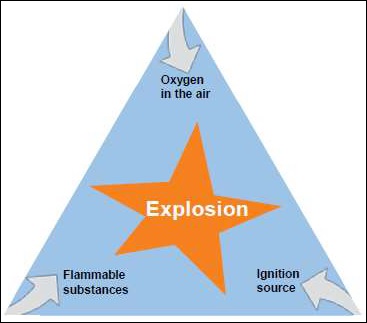
- Electrical Safety Tutorial
- Electrical Safety - Home
- Power System
- Indian Standards
- Low Voltage Overload Protection
- Short Circuit Protection
- Earth Fault Protection
- Earthing
- Types of the Supply System
- Cables
- Classification of Hazard-Prone Areas
- Safety Measures Related to Gas/Ducts/Fibre material
- Classification of Temperature
- Protection Against Weather Complexities
- Safe Electrical Equipment Design Characteristics
- Test Certifications
- Procedure to Mark Unprotected Equipment
- Maintenance of Unprotected Equipment
- Duties and Obligations
- Primary Ex-protection
- Secondary Ex-Protection
- Precautions Against Highly Flammable Contents
- Safety Measures During Handling Lighting Protection Equipment
- Bonding
- Transformer Safety
- Motor Handling Safety
- Generator Handling Safety
- Crane Handling Safety
- Safety Measures During Preventive Maintenance
- Types of Safety Equipment
- Implications of Human Behaviour
- Do's and Don'ts at a Glance
- Electrical Safety Useful Resources
- Electrical Safety - Quick Guide
- Electrical Safety - Useful Resources
- Electrical Safety - Discussion
Electrical Safety - Primary Ex-protection
The hazards are generally created in chemical factories, refineries, and paint workshops, cleaning equipment, mills and stores for milled products and in tank facilities and loading areas for flammable gases, liquids and solids. The explosion protection defines the health and safety at the workplace.
The principle of Explosive protection
When a mixture occurs in air under an atmospheric condition with flammable substances in the form of gas, vapor, dust, fibers or flyings, explosion hits the workspace. Safety parameter is a function of the pressure, temperature and oxygen. So the limitations are necessary. There are three factors of the explosion.
- flammable material
- Oxygen (Air)
- Source of Ignition

Figure 1: Basis of Explosion
By limiting any one of the above factors can reduce the probability of primary explosion and protection can be determined accordingly.
Basic/Primary Ex- protection
Primary explosive protection is a process to reduce the number of flammable substances or atmospheric oxygen to a point which ensures no danger of explosion. The open layout and proper ventilation increases air circulation and flushes the air. It is not possible to completely replace the atmospheric oxygen of an area where people work. According to the analyzing facts there are three possibilities of an explosion in presence of flammable gas.
Due to heat − open flame/hot surface/hot gases
Electrical Sparks − opening and closing of contacts, short circuit, static discharge
Mechanical Spark − friction, hammering, grinding
The first question arises that is there any form of dangerous materials which potentially causes an explosion. Then what is the quantity of those combustible substances? The potential of an atmosphere for explosion needs to be measured. The primary ex-protection implementation and compliance should meet ex-protection rules and standards.
Primary Ex-protection Measures
The main aim of primary ex-protection is to prevent the formation of dangerous substances. The protection measures are only to reduce the probability of occurrence of such materials and its spreading capacity. The measures must be cost-effective. Some of the protection measures are below −
Try to use incombustible or less volatile substances or replace critical components if possible.
System parts should be used with inert gases such as nitrogen.
Dilute the combustible liquids with a non-reacting material such as water.
Reduce the number of combustible substances.
Moistening of dust is necessary.
Regular cleaning also reduces the number of dust.
Use enclosures filled with inert substances
Provide natural or artificial ventilation systems which limit the concentration of flammable materials.
Install dangerous gas detection system which can provide a notification through an alarm or breaking of the system.
The flash point of flammable liquid should be changed by adding other materials such as water. Otherwise the processing temperature must be lowered. If the flash point of a flammable liquid is above the processing temperature then the faults, stand-stills, leakage come under control.
Questions
1. Which one is not a factor of explosion?
A. Oxygen
B. Electrical spark
C. Acetylene
D. None of these
Ans: D
Explanation − No fire exists without oxygen in the air. An electrical spark is a source of ignition and acetylene is a flammable substance. So A, B and C are the factors of the explosion.
2. Why is ventilation necessary for every workplace?
A. To flush the air
B. To circulate the air
C. To limit the concentration of flammable substances
D. All of the above
Ans: D
Explanation − All (A, B, C) are related to each other which are the works of a ventilator. Ventilation is necessary for a workplace for circulating and flushing the air that reduces the concentration of combustible substances.
3. Which substances are used in the enclosures?
A. Water
B. Inert gases
C. Alkali materials
D. All of the above
Ans: B
Explanation − The inert gases don’t react with any material. So enclosures are protected by inert gases.